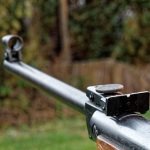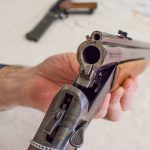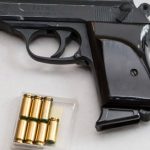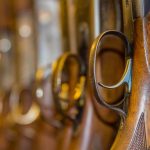Remembering the Impact of the Strathfield Massacre
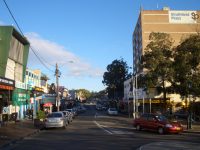
First published: 6 March 2018
The idea of arming school teachers may not seem appropriate or warranted in Australia. But in the US state of Michigan, lawmakers are currently considering new gun-related legislation that could establish a scheme whereby trained teachers have access to guns on school property.
US president Donald Trump spruiked the idea following the ninth deadliest mass shooting in the country’s modern history, which saw seventeen school students and staff members shot dead at Stoneman Douglas High School in Florida.
The February 14 massacre was the eighteenth school shooting in the United States this year. Since the incident, there’s been another four shootings at high schools. Many from other countries find these statistics hard to believe.
US Centre for Disease Control and Prevention data outlines that 96 Americans die every day due to gun violence, which is over 33,000 gun deaths a year. Nearly 79,000 others are injured by guns annually.
And just like after last October’s Las Vegas massacre – the worst in modern American history – the Florida tragedy has sparked numerous articles about how the US could learn from Australian gun control laws.
The forgotten massacre
Most of these articles report the 1996 Port Arthur massacre as the sole catalyst for the gun laws that have become the envy of many countries. But the truth of the matter is Australian attitudes and laws had already begun to change as a result of the Strathfield massacre.
Sydney graphic designer Alison Fowler recalls that “after the Strathfield massacre, everyone was outraged with the gun laws as they were.” And she remembers this well, as Ms Fowler was actually present inside the shopping mall during the mass shooting.
Beyond comprehension
At around 3.30 pm on August 17 1991, Wade Frankum finished drinking his fourth cup of coffee at the Coffee Pot café in Strathfield Plaza. The 33-year-old taxi driver then stood up, pulled out his bowie knife and repeatedly stabbed 15-year-old Roberta Armstrong in the back.
Frankum proceeded to take his semiautomatic assault rifle out of the postpak he’d concealed it in and started firing upon the unsuspecting shoppers in the mall. He killed Joyce Nixon, 61, and her 36-year-old daughter Patricia Rowe, before he shot and killed café owner George Marvis.
It was at this point that the killer made his way through the mall randomly shooting at anyone who moved. Ms Fowler and her father had to hide behind the counter at the jewellery store where they were working as Frankum came running past.
The gunman then made his way to the mall’s rooftop carpark where he hijacked a car. But, on hearing approaching police sirens, he got out of the vehicle, stuck the rifle in his mouth and shot himself.
By that stage, Frankum had killed seven complete strangers and injured six.
Turning the tide
Ms Fowler said that Strathfield Plaza shop owners, along with the wider community, were shocked that a Homebush taxi driver could so easily get his hands on a semiautomatic rifle.
Frankum was simply able to put down that he was a hunter as the reason why he needed a firearm on his gun licence application. And this gained him licence approval, despite the fact that no one he knew had ever known him to have gone hunting.
At the time, there were no restrictions on how many guns an individual could own, and semiautomatic rifles could be bought without registration. “Until then, I don’t think anyone realised that the laws weren’t working,” Ms Fowler said, “and it was alarming to think it could happen again.”
The National Coalition for Gun Control was formed in the wake of the Strathfield shooting, and the groundswell of support it garnered led to the NSW state government placing restrictions on semiautomatic rifles. And this paved the way for greater national gun controls.
Ms Fowler remembers her mother attending rallies calling on the federal government to address gun ownership and restrict automatic weapons. “The impact of these early conversations meant that by the time Port Arthur occurred, the government had a clear mandate to change,” she added.
Early gun control laws
Two months following the Strathfield massacre, the Australian cabinet agreed to a series of national gun controls, which included bans on Lithgow manufactured self-loading military style rifles, as well as repealing the 1903 Australian Rifle Club regulations.
Then Australian justice minister Michael Tate told his fellow ministers that the federal government had to take a lead on a national gun control strategy. According to Tate, underlying the reforms was the principle that “the possession of firearms is not a right, but a conditional privilege.”
And in late October 1991, the Australian Police Ministers’ Council pushed through national uniform gun laws. But despite these measures, the gun controls in Tasmania and Queensland remained lax.
The final mass shooting
On April 28 1996, 28-year-old Martin Bryant went on a shooting spree in Tasmania’s Port Arthur, killing 35 people and wounding 23 more. Within just 15 seconds, Bryant was able to fire 17 shots that left 12 people dead and another 10 injured.
Following this mass murder, the Howard government rolled out the National Firearms Agreement (NFA) in 1996. And this series of gun control reforms has meant there’s never been another mass shooting in Australia again.
The NFA effectively banned the sale and possession of automatic and semiautomatic long-arms, except under “exceptional circumstances” where this prohibition doesn’t apply.
The tragedy remains
Ms Fowler believes that the role the Strathfield massacre played in changing Australian attitudes to gun laws needs to be remembered, especially for the families of those who lost their lives in the incident.
While “Port Arthur was harrowing and led to the gun amnesty and further gun restrictions,” Ms Fowler told Sydney Criminal Lawyers®, it was the Strathfield massacre that made the wider public aware of the potential firearms have to cause such destruction “so quickly in the community.”
It’s been 22 years since the NFA brought a halt to a series of 13 Australian mass shootings that began in 1979. And yet despite the evidence constantly being presented to the US, it seems many politicians in that country would sooner see schools banned in order to prevent shootings, rather than firearms.
“The US politicians that support the current gun laws seem to want to argue their constitutional rights, rather than accept that loss of life is inevitable when semi and fully automatic weapons are freely available within the community,” Ms Fowler concluded.



